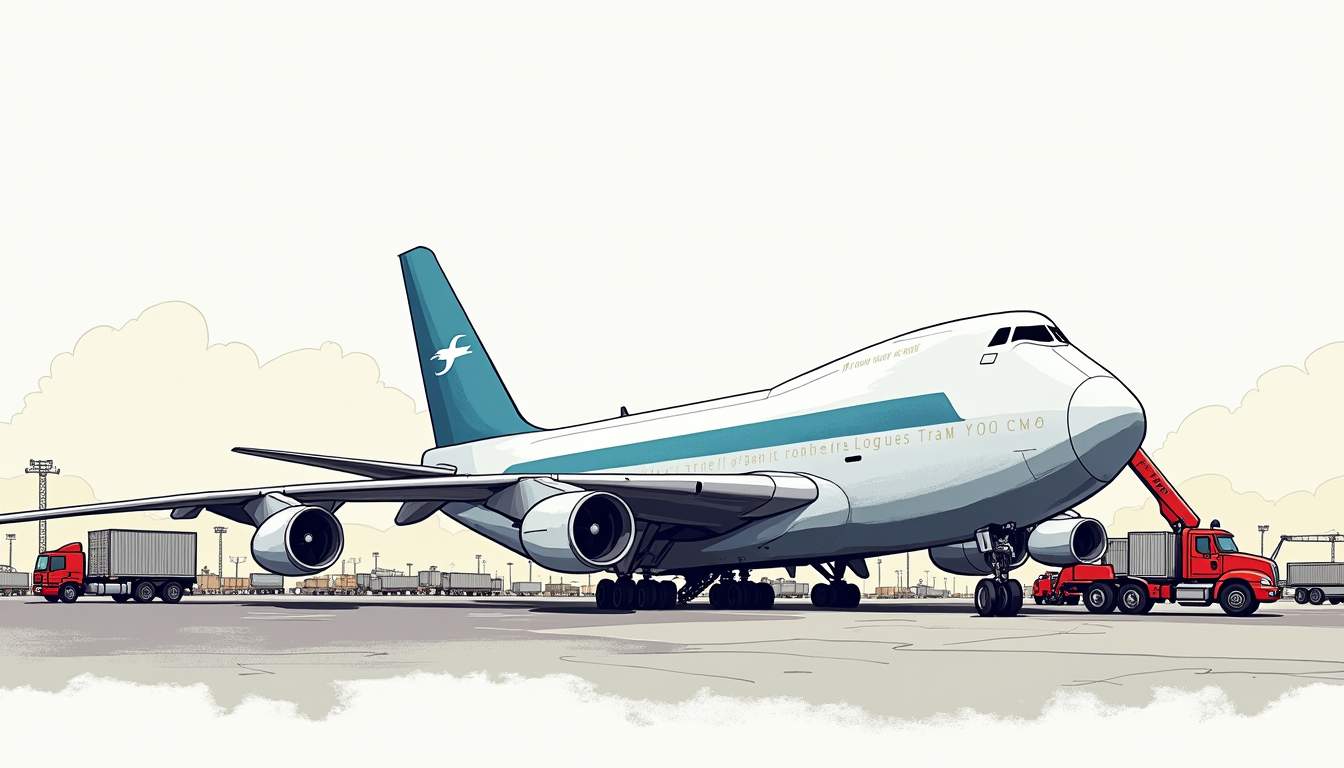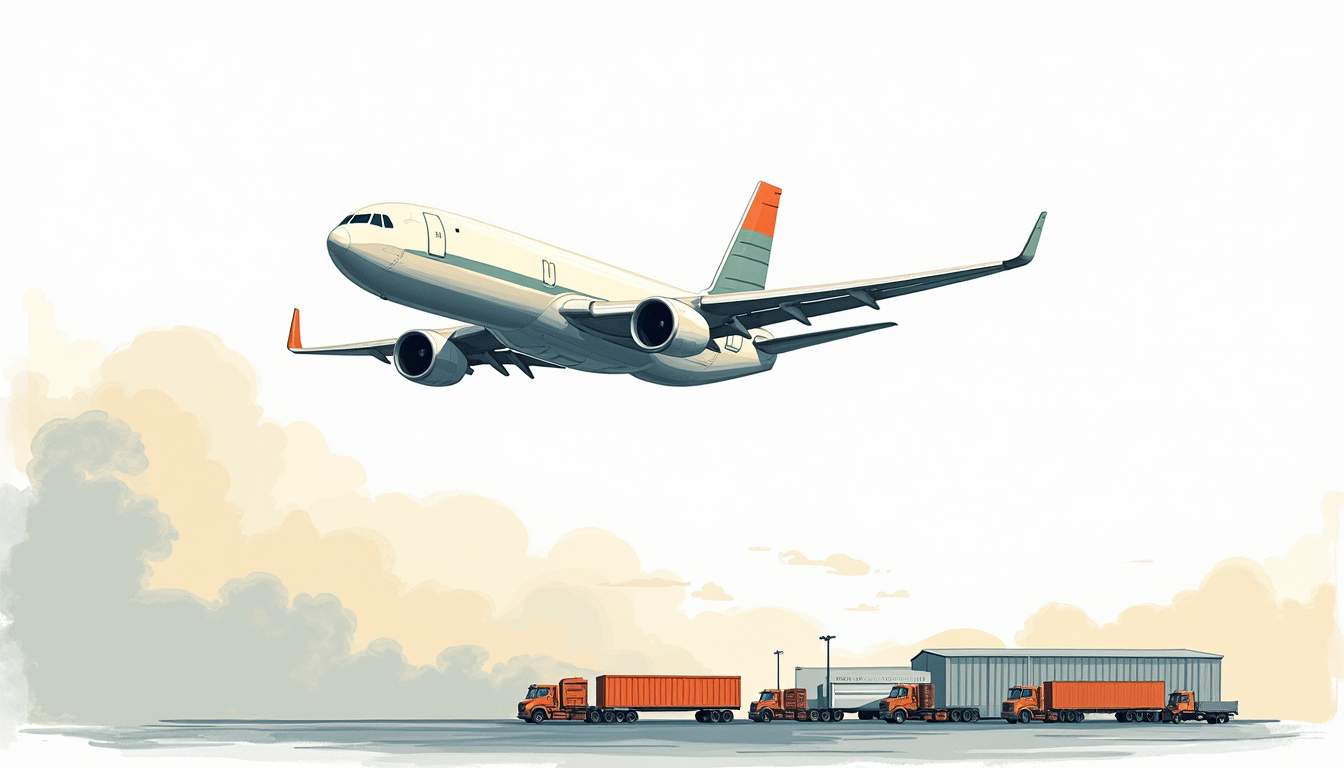In the world of logistics, oversized air cargo presents unique challenges that require innovative strategies for effective management. As global trade continues to expand, the demand for transporting large and heavy items by air has surged. This article delves into the intricacies of oversized air cargo logistics, exploring strategies and solutions that can help streamline operations and enhance efficiency.
Understanding Oversized Air Cargo
Oversized air cargo refers to shipments that exceed the standard dimensions and weight limits set by airlines. These items can range from industrial machinery to large automotive parts, and even entire aircraft components. The complexity of transporting such cargo lies not only in its size but also in the logistics of loading, unloading, and ensuring safety during transit. Given the high stakes involved, shippers must navigate a myriad of regulations and safety protocols to ensure that oversized cargo is transported efficiently and securely.
The Importance of Proper Classification
Proper classification of oversized cargo is crucial for effective logistics management. This involves accurately measuring the dimensions and weight of the cargo, as well as understanding the specific requirements for transportation. Misclassification can lead to delays, increased costs, and potential safety hazards. Furthermore, accurate classification helps in determining the necessary documentation and permits required for international shipping, which can vary significantly from one country to another.
Additionally, different airlines have varying policies regarding oversized cargo. Familiarity with these policies can aid shippers in selecting the right carrier for their needs, ensuring that the cargo is handled appropriately throughout its journey. It is also beneficial for shippers to build strong relationships with freight forwarders who specialize in oversized shipments, as they can provide invaluable insights and assistance in navigating the complexities of air cargo logistics.
Challenges in Oversized Air Cargo Logistics
Transporting oversized air cargo poses several challenges. One of the primary issues is the limited availability of aircraft capable of accommodating large shipments. Not all airlines have the necessary fleet, which can restrict options for shippers. Additionally, the scheduling of flights for oversized cargo can be less flexible than standard cargo, often requiring advance booking and coordination to align with available aircraft.
Moreover, the logistics of loading and unloading oversized cargo require specialized equipment and trained personnel. This adds another layer of complexity to the process, necessitating careful planning and coordination. For instance, ground handling teams must be equipped with cranes or forklifts capable of lifting heavy and bulky items, and they must be trained to handle such equipment safely. Furthermore, the need for secure packaging and the potential for cargo to shift during transit means that shippers must also invest in high-quality packing materials and techniques to protect their valuable shipments. The stakes are high, as any damage to oversized cargo can result in significant financial losses and operational disruptions for the businesses involved.
Strategies for Optimizing Oversized Air Cargo Logistics
To navigate the challenges associated with oversized air cargo, logistics professionals can implement several strategies that enhance efficiency and reduce costs.
1. Advanced Planning and Coordination
Effective logistics management begins with thorough planning. This includes assessing the dimensions and weight of the cargo, determining the best route, and coordinating with airlines and ground handlers. Early engagement with all stakeholders involved in the logistics chain can help identify potential issues before they arise.
Utilizing technology, such as logistics management software, can facilitate better planning by providing real-time data on cargo status, available aircraft, and transportation options. This proactive approach can minimize delays and ensure a smoother process from start to finish.
2. Leveraging Specialized Equipment
Using specialized equipment designed for oversized cargo can significantly improve the efficiency of loading and unloading processes. This includes cranes, forklifts, and custom-built containers that can accommodate large items safely.
Investing in such equipment not only speeds up operations but also reduces the risk of damage to the cargo. Additionally, training personnel in the use of this equipment is essential to ensure safety and compliance with regulations.
3. Collaboration with Experienced Partners
Partnering with logistics providers that specialize in oversized air cargo can yield substantial benefits. These partners often have established relationships with airlines and ground handlers, which can lead to more favorable rates and improved service.
Moreover, experienced logistics providers possess in-depth knowledge of the regulations and requirements for transporting oversized cargo across different regions. This expertise can help navigate complex customs processes and ensure compliance with international standards.
Technological Innovations in Air Cargo Logistics
The logistics industry has seen a significant transformation due to technological advancements. Embracing these innovations can enhance the efficiency of oversized air cargo logistics.
1. Cargo Tracking Systems
Implementing cargo tracking systems allows shippers and logistics providers to monitor the status of oversized shipments in real-time. This visibility enables proactive management of potential delays and enhances communication with all stakeholders.
Moreover, tracking systems can provide valuable data on transit times and performance metrics, which can be analyzed to improve future logistics strategies.
2. Automation and Robotics
Automation is increasingly being integrated into logistics operations, particularly in warehousing and loading processes. Robotics can assist in handling oversized cargo, reducing the physical strain on workers and minimizing the risk of accidents.
Automated systems can also streamline documentation and inventory management, ensuring that all necessary paperwork is in order before the cargo is transported.
3. Data Analytics for Decision-Making
Data analytics plays a crucial role in optimizing oversized air cargo logistics. By analyzing historical data on shipping patterns, costs, and transit times, logistics professionals can make informed decisions about routing and carrier selection.
Furthermore, predictive analytics can help anticipate demand for oversized cargo transport, allowing companies to allocate resources more effectively and reduce operational costs.
Regulatory Considerations in Oversized Air Cargo Logistics
Transporting oversized cargo by air is subject to various regulations that must be adhered to in order to ensure safety and compliance. Understanding these regulations is essential for successful logistics management.
1. International Regulations
Oversized air cargo often crosses international borders, making it subject to international regulations set by organizations such as the International Air Transport Association (IATA) and the International Civil Aviation Organization (ICAO). These regulations govern aspects such as packaging, labeling, and documentation requirements.
Shippers must stay informed about any changes to these regulations to ensure compliance and avoid potential fines or delays in transit.
2. Customs Clearance Procedures
Customs clearance is a critical step in the logistics process for oversized air cargo. Proper documentation, including commercial invoices and certificates of origin, must be prepared to facilitate smooth clearance.
Working with customs brokers who specialize in oversized cargo can expedite the clearance process, as they are familiar with the specific requirements and can navigate any potential issues that may arise.
Case Studies: Successful Oversized Air Cargo Logistics
Examining real-world examples of successful oversized air cargo logistics can provide valuable insights and inspiration for logistics professionals. Here are a few notable case studies.

1. Transporting Wind Turbine Components
A global logistics company was tasked with transporting large wind turbine components from a manufacturing facility to a remote wind farm. The oversized cargo included turbine blades and towers, which posed significant logistical challenges.
By employing advanced planning techniques and collaborating with specialized carriers, the logistics team successfully coordinated the transport, ensuring that all components arrived on schedule. The use of specialized equipment for loading and unloading further enhanced the efficiency of the operation.
2. Delivering Aircraft Parts
In another instance, a major airline required the rapid delivery of oversized aircraft parts for maintenance operations. The logistics provider utilized a combination of air and ground transport to expedite the shipment.
Through effective communication and coordination with the airline’s maintenance team, the logistics provider ensured that the parts arrived in time, minimizing downtime for the aircraft and maintaining operational efficiency.
Future Trends in Oversized Air Cargo Logistics
The logistics landscape is constantly evolving, and staying ahead of emerging trends is essential for optimizing oversized air cargo logistics. Here are a few trends to watch for in the coming years.

1. Sustainable Practices
As environmental concerns continue to grow, the logistics industry is increasingly focusing on sustainability. This includes adopting eco-friendly practices in transportation, such as utilizing fuel-efficient aircraft and optimizing routes to reduce carbon emissions.
Moreover, companies are exploring alternative materials for packaging oversized cargo to minimize environmental impact. Embracing sustainability can not only enhance a company’s reputation but also lead to cost savings in the long run.
2. Enhanced Collaboration Across the Supply Chain
Future trends indicate a shift towards greater collaboration among stakeholders in the logistics supply chain. This includes closer partnerships between shippers, carriers, and logistics providers to streamline operations and improve efficiency.
By fostering collaboration, companies can share valuable insights and resources, ultimately leading to better service delivery and enhanced customer satisfaction.
3. Integration of Artificial Intelligence
Artificial intelligence (AI) is poised to revolutionize the logistics industry, including oversized air cargo logistics. AI can be utilized for predictive analytics, route optimization, and even automating customer service inquiries.
As AI technology continues to advance, logistics professionals will have access to powerful tools that can enhance decision-making and improve overall operational efficiency.
Conclusion
Optimizing oversized air cargo logistics requires a multifaceted approach that encompasses advanced planning, technological innovations, and a thorough understanding of regulatory requirements. By implementing the strategies and solutions outlined in this article, logistics professionals can navigate the complexities of oversized cargo transport and enhance operational efficiency.

As the logistics landscape continues to evolve, staying informed about emerging trends and best practices will be essential for success in this dynamic field. Embracing collaboration, sustainability, and technological advancements will not only improve service delivery but also position companies for growth in the ever-expanding global market.
Take Your Oversized Air Cargo Further with Freighter Gator
Ready to elevate your oversized air cargo logistics to new heights? At Freighter Gator, we’re committed to delivering fast, flexible air cargo charter solutions tailored to your unique needs. With our expertise in handling time-critical freight, from emergency automotive parts to oversized industrial equipment, we ensure your cargo arrives on time, every time. Don’t let logistics complexities slow you down. Request a Quote today and experience the peace of mind that comes with reliable, efficient air freight services from Freighter Gator.
